Redevelop, Revitalize and Revise
/Words - Bill Heller
Gulfstream Park
Can racetracks prosper or even survive without redevelopment and/or revitalization? Must they become year-round attractions or even destination venues? Tracks have tried adding casinos, concerts, hotels, retail stores and even a village—all with a hope of increasing the handle that generates purses.
Yet several of North America’s most storied racetracks have closed their doors forever: Hollywood Park, Arlington Park, Calder Race Course, and, in the not-too-distant future, Aqueduct Racetrack.
“I think the product has to evolve,” David O’Rourke, CEO and president of the New York Racing Association, said. “Every situation is unique.”
His sure is. He’s taken on razing and rebuilding Belmont Park and closing Aqueduct. He’s also carefully tinkered with the historic Saratoga Race Course.
Woodbine, which launched a 25-year ambitious project in Toronto in March 2022, is already showing dramatic increases.
Churchill Downs has already spent millions improving its facility, so has Oaklawn Park and Kentucky Downs.
Frank Stronach was first, envisioning a very different Gulfstream Park more than 20 years ago. His 1/ST also operates Santa Anita, Laurel Park, Pimlico Racetrack, Golden Gate Fields and Rosecroft, a harness track in Maryland. 1/ST acquired Gulfstream Park in September 1999, for $95 million.
It didn’t take Stronach long to reach a conclusion about Gulfstream.
“We don’t get enough customers,” Stronach told Andy Beyer in his Washington Post column on February 7, 2001. “We don’t get a lot of young people. Something isn’t right. That’s why you’ve got to change. I like horses a lot—really a lot. But even I get bored sitting a whole afternoon. If I’m interested in the second race and the seventh race, maybe between them, I want to get a haircut or do some shopping.”
Beyer concluded 22 years ago: “Of course, it’s easy to find fault with any new ideas. But at the very least, Stronach deserves credit for trying hard (and investing confidently) to resuscitate the game he loves. If he fails, he will fail because the world has changed and there is no possible way to bring back the old days of grandeur and glory. But all racing fans would love to see him succeed, to see a day when Gulfstream is packed with young patrons sipping cappuccino by the paddock.”
Has that happened?
Gulfstream Park’s Carousel Club.
Actually, yes. Patrons at the adjacent Yard House, one of the dozens of restaurants in the Gulfstream Park Villages, can dine just outside the paddock. Whether they have come from the racetrack or will go to the racetrack after they dine is hard to tell, but at least that part of Stronach’s vision has come true.
Stronach used the mythological Pegasus to stamp Gulfstream Park with a new signature race, the Pegasus World Cup, and an enormous statue of Pegasus vanquishing a dragon is nothing less than stunning, At 110 feet, Pegasus is the second tallest statue in the continental U.S., topped only by the Statue of Liberty. The statue, which was pre-cast and shipped from China in 23 packing containers and steel beams shipped from Germany, cost $30 million.
Located adjacent to multiple parking lots separating the track and the backstretch, Pegasus guards the track. Inside the track, there is a casino on two floors, a large splashy simulcast room, two restaurants and offices. Outside, the village of retail stores is separated by the paddock and a normal-size statue of Cigar.
The Gulfstream Park Villages, which formally opened on February 11, 2000, consists of nine one- and two-story buildings spread over 400,000 square feet. offering shopping, dining, live events and booked events. There are seven fashion shops, three specialty stores, three art galleries, 11 home furnishing and houseware outlets, and four health and beauty salons. There are 36 dining options including fine dining, casual dining, quick bites, trackside eats, bars and lounges. Events occur every Friday, Saturday and Sunday. Marquis events include concerts. Events for the public include weddings, parties, meetings, suites and boxes, film setting and concert rentals.
All that’s lovely, but has it enhanced Gulfstream Park’s horse race meet, now year-round with the closing of Calder Race Course? It’s tough to tell if the vast amenities have created new racing fans. “There is no way to tell,” Gulfstream Park Executive Director and Vice President Billy Badgett said.
Handle numbers, which are tough to evaluate because of the two-year pandemic, have changed little the past year and a half.
Oaklawn Park is the shining example of racetracks changing, growing and increasing handle since it completed a $100 million expansion in 2021.
In its 2022–2023 68-day meet from December to May, Oaklawn’s average daily handle was $6.67 million, up from $6.23 million for its 66-day meet when December dates were first added last year. Purses averaged more than $700,000 daily.
Those weren’t the only good numbers. “Everything was up,” said Oaklawn Park President Lou Cella, whose family has owned Oaklawn for some 120 years. Both on-track and off-track handle were up. And it’s allowed Oaklawn Park to raise purses for its 2023–2024 meet beginning in December. Cella said maiden special weights will go for $115,000, allowance races for $140,000, and stakes race minimum $150,000.
Oaklawn Park held four Kentucky Derby point-standing stakes races topped by the $1.25 million Arkansas Derby. “We’re going to raise every one of our three-year-old stakes, and the 2024 Arkansas Derby will go for $1.5 million,” Cella revealed.
Though Oaklawn Park stopped issuing attendance figures when it stopped charging for admission some 15 years ago, attendance on Saturdays during the meet ranged from 25,000 to 35,000 despite many rainy Saturday afternoons. The Arkansas Derby drew an estimated 65,000. “Once we got into gaming, it was hard to charge for racing because we weren’t charging for gaming,” Oaklawn Park Senior Vice President Eric Jackson said.
Business was also booming in the claim box as 556 claims were made for a cumulative $10.6 million.
Continuing to experiment, Oaklawn Park held its second annual Hall of Fame Day, featuring 19 members of the Hall. Donations of $2,500 were given to each Hall of Famer’s favorite charity.
Oaklawn Park gained momentum through its highly popular instant racing slot-like machines and kept adding amenities, including a hotel with a dynamic view of the entire stretch. Several restaurants are also available to patrons.
“We feel like we’re pioneers getting racing and casinos working together,” Jackson said. “The numbers are terrific. The model is working.”
To be sure, Oaklawn Park is sweetening the deal for trainers and owners that began last year. Trainers and owners who have a starter during the final two weeks of the meet will receive daily bonuses of $200 a day and $400 a day, respectively. “They were designed to help the smaller trainer,” Cella said. “Last year, our average number of starters the final two weeks were 9 to 9.5.”
The Woodbine community plan
Woodbine’s numbers have rocketed up since the inception of its bold 25-year Woodbine Community Plan last year to literally become part of the Toronto community. Initial returns have been huge. Woodbine set a record for handle for the 2022 Thoroughbred meeting at $621 million, a dramatic increase from the previous record: $533 million in 2018. Last year was the first year since 2019 that Woodbine held its complete Thoroughbred season after the pandemic.
Woodbine’s surge came after CEO Jim Lawson helped secure a historic funding agreement with the Ontario government in 2019 that allots up to $105 million annually to breeders, owners and trainers through 2038.
Lawson said in a Woodbine statement in late December, “At the start of the pandemic, I felt that through determination and resiliency, which is the trademark of this industry, we would emerge stronger; and this record is evidence we are on the right track.”
That track includes railroad tracks. A train station is one of the many aspects of the Woodbine Community Plan. “We don’t have a good rail service here,” Lawson said in June, 2023. “We want to bring in a train station.”
Woodbine can do that because it encompasses 683 acres. “Only 240 is for the track,” Lawson said. “That leaves about 400 acres developmentable. We will make two large residential units with 30,000 housing units on this site. We will be able to make a lot of those people fans of horse racing.”
What Woodbine is doing is changing the game. Instead of bringing fans to the racetrack, these people will already be a short walk away from the track. “It will be a really cool place,” Lawson said. “It will take 10 to 15 years. This is my vision. It’ll be a vibrant community. There’ll be so much going on here. They can walk to places. The sky’s the limit. We’re talking about 12 to 14 million visitors to this site by 2025. That’s about double what we have now.
Woodbine CEO Jim Lawson
“We’ve got a 5,000-seat music auditorium opening in August that can be used for conferences as well. We hope to open a retail sports book later this year overlooking the track. It’s up to us to make sure they’re also betting on horse racing. We hope to have a FIFA World Cup in 2026.”
Woodbine already has The Stella Artois Terrace, a 300-seat patio and live music at the finish line that opened last summer. “It’s been successful,” Lawson said. “It’s hard to get a reservation there. We boast our food is as good as a restaurant. It’s bringing out new fans. There’s no admission charge. No parking charge. We want people to just watch racing.”
Woodbine will open a multi-story hotel trackside on its stretch in August.
Lawson—who also co-owns the Hamilton Tiger-Cats in the Canadian Football League, the same team his father led to the 1945 Grey Cup and the Canadian equivalent of the Super Bowl when they were the Hamilton Wildcats—believes in the sport of horse racing: “I’m a firm believer that you need to get people out to the racetrack to experience the horses, experiences the jockeys. It is important for horse racing to sell that game-day experience to get people out here to see the sport.”
To that end, Lawson is proud of Woodbine’s broadcast team of 54 people. “We have 2,000 people working here and another 3,000 on the backstretch,” Lawson said.
They will be direct beneficiaries of Woodbine’s brave new world. “It’ll be a vibrant community,” Lawson said. “It’ll be a cool place. It will take 10 to 15 years with horse racing sitting in the center of it all. It’s a major transformation of the site. It will take a few years, but it will sustain horse racing for generations.”
Belmont Park has already started a major transformation of its site. That happened when the New York Islanders decided to build a new, 17,500-seat, multi-purpose arena on the Belmont Park grounds. Opened in 2021, the USB Arena has been aptly nicknamed by fans and writers as “The Stable.”
That was an appetizer. On April 30 this year, New York State Governor Kathy Hochull and the State Senate and Assembly passed The Revenue Article VII Bill, which authorized NYRA to utilize a $450 million loan to build new facilities.
The redevelopment, the first major one at Belmont Park since 1968, will ultimately allow NYRA to end racing at Aqueduct and finally bring the Breeders’ Cup back to New York for the first time since 2005. Last November, the Breeders’ Cup announced a commitment to include Belmont Park as part of its rotation of host tracks, which include Santa Anita, Del Mar, Churchill Downs and Keeneland.
Belmont’s 28-day 2023 fall meet will be held at Aqueduct from September 14 through October 29. Following the Aqueduct winter meet, Belmont will run its 2024 spring/summer meet. The grandstand/clubhouse will be demolished after that meet. NYRA plans and hopes to have the new Belmont Park ready to hold the 2026 Belmont Stakes.
The backdrop for that historic return of the Breeders’ Cup will be completely foreign to fans accustomed to seeing Belmont’s enormous grandstand. The current grandstand and clubhouse will be razed and replaced by one a quarter of its size. “To have a healthy market, the building is a component,” O’Rourke said.
In recent years, the look of few people at the enormous facility isn’t a healthy one. O’Brien is hoping to fix that.
NYRA CEO David O’ROUrKE
O’Rourke will forever be known as the man who changed or saved Belmont Park. His background is in finance, not horses. Growing up in New Jersey, two miles from The Meadowlands, he occasionally visited that track and Monmouth Park. “It would be generous to call me a casual fan,” he said. “My first real exposure to racing was at Aqueduct.”
O’Rourke graduated from Richard Stockton College and got an MBA at Tulane University. He worked for Zolfo Cooper and Capstone Advisory Group Corporate Restructuring Practices and was vice-president of operations at Datek Online.
O’Rourke, now 49, joined NYRA as director of financial planning in 2008. Two years later, he became vice president for corporate development. In 2013, he was appointed chief revenue officer and senior vice president. NYRA named him interim CEO on January 23, 2019, and appointed CEO and President on March 26, 2019.
“I was on the building development side,” O’Rourke said. “When I came in, another executive came in, Glenn Kozak. He’s the track guy. For me, it was business.”
He began his NYRA career at a challenging time. “We had just come out of bankruptcy in ’08,” he said. He believed his lack of experience in racing was an asset: “It gave me an advantage. It was my first look at it. It was fresh. I noticed how fractured horse racing is. The one thing that stood out to me was you could wager on-line in 2008. It was only chance to wager on-line.”
Subsequently, he has been pivotal in developing NYRA Bets, NYRA’s national advance deposit wagering (ADW) platform and expanding NYRA’s national television coverage, which resulted in daily coverage of Belmont Park and Saratoga’s meets via Fox Sports. He is proud of both: “I just saw the potential. We launched NYRA Bets nationally and worked out a deal with Fox. We self-produce 1,000 hours for Fox. We fixed the business, and that gave us credibility.”
He also came to a conclusion about NYRA racing: “NYRA had an extreme challenge downstate operating two tracks. It was obvious to NYRA to reconsolidate. How do you do that? In 2019, we began work analyzing Belmont. Then COVID hit.”
That didn’t alter O’Rourke’s conclusion. Belmont Park needed a facelift, especially if it was to operate year-round with Aqueduct closing. “Belmont itself was a massive warehouse,” O’Rourke said. “Right after it was renovated, OTB opened.”
Yet Belmont Park staged a tremendous Belmont Stakes in 2004, when 120,000 fans—the most to ever see a sporting event in New York State’s history—witnessed Birdstone’s late-running victory to deny undefeated Smarty Jones the Triple Crown.
“The building is impressive in scale but didn’t have the amenities people wanted,” O’Rourke said. “People are looking for clubs, more intimate settings. It’s changing from 1.3 million square feet with zero suites to 275,000 square feet with suites, dining and hospitality at a very high level. We’re going to shrink the building and open up acres of green space on the track side, bring the park back to Belmont and allow families to come in. What’s special about Belmont are the trees, the iconic arches. We have a lot of freedom, a lot of land. I think Belmont is going to look different, more New York City than a country fair like Saratoga.”
Specifically, Belmont is adding a one-mile synthetic track inside the inner turf course due to open at the start of the 2024 meet and a tunnel to the infield allowing fans to watch races from there. Eventually, there will be a second tunnel for horses. “We will also redo the inner turf course and redo the main track,” O’Rourke said. “I think it will be a destination place. It’s going to be iconic. I think Belmont is going to be iconic.”
Saratoga Race Course has been iconic for more than 150 years. NYRA has already created new facilities there including the 1863 Club, a new building on the clubhouse turn. “With Saratoga, you’ve got to be very careful,” O’Rourke said. “We have worked with the local community, with the Saratoga Preservation Society and local architects. It’s like you’re playing with a jewel. You just want to polish it.”
They best be careful. Other pricy amenities like 1863 Club are targeting upper-scale customers. Meanwhile, Saratoga has raised its admission price to $10, which includes neither a seat for you or your car in a parking lot. Stopping the extremely popular Open House, which drew more than 10,000 fans the Sunday before Opening Day and benefitted local charities, was a bad decision. Countless fans brought their families to Open House, and the smiles on their children’s faces as they did pony rides, kids’ rides and watched non-betting races suggested NYRA had the solution to making children racing fans for life. Stopping that was a mistake.
Belmont’s reconstruction will mandate a new location for the 2025 Belmont Stakes, and there is considerable interest from NYRA to stage that race at Saratoga as part of a three- or four-day mini-meet. “Part of me would love to try it at Saratoga,” O’Rourke told David Grening in his June 10th, 2023, story in the Daily Racing Form. “I think it would drive a lot of activity up there. It might set some benchmark that would be tough to ever beat. It would be such a cool event. Everybody I know would want to be there.”
That decision has yet to be made by O’Rourke and the NYRA Board of Trustees. O’Rourke welcomes the input of his Board, which boasts several extremely successful business executives. “I’ve got a lot of people involved in this,” O’Rourke said. “We have a deep Board of Trustees who work to our benefit with their expertise, guys who have worked on billion-dollar projects. Belmont is a half-billion.”
Belmont is scheduled to begin destruction of the grandstand to begin a new grandstand that will start after the 2024 Belmont summer meet. “The goal coming in is having Belmont ready for 2026,” O’Rourke said. “That might be aggressive.”
Maybe aggressive is what Belmont needed. Maybe not. But it sure will be interesting to follow.
Horsemen and fans got to see part of the new First Turn Club at this year’s Kentucky Derby, part of Churchill Downs’ $200 million, multi-year renovation. Situated about an eighth of a mile past the finish line, the new building, which cost $90 million, drew raves. “The scope of this complex is stunning,” Churchill Downs CEO Bill Carstanjen told Frank Angst of Blood-Horse. “It forever changes the personality of this portion of our venue, which historically had been dominated by a series of temporary structures and back-of-house infrastructure.”
The First Turn Club features 2,000 seats and is climate controlled. It features high ceilings, lounge spaces and large glass windows overlooking the track. Above the indoor area are 5,100 padded stadium seats on two levels. There is a 360-degree, wrap-around LED screen.
The Paddock Project design for Churchill Downs Racetrack.
The Churchill open-air paddock with an oval walking ring and grass center has been replaced with a three-story white brick building located between the track’s iconic twin spires.
Churchill Downs expects the renovations to be completed before the 2024 Kentucky Derby.
Churchill Downs Inc. also spent $148 million renovating Turfway Park, the track it purchased in October, 2019. It tore down its old grandstand, replaced its racing surface and constructed a new grandstand, gaming floor, clubhouse, simulcast area and event center. It also increased its number of historical horse racing machines to 850, a number which could grow to 1,200 if warranted.
Also in Kentucky, Kentucky Downs—the unique track with a seven-day, all-turf racing meet—began a $25 million renovation project in 2019. Business has been booming ever since, allowing the track to up the purse of its signature race, The Mint Million, from $1 million to $2 million, making the race the second biggest purse for three-year-olds in Kentucky after the Kentucky Derby.
“It’s been a fun ride,” Ted Nicholson, Kentucky Downs’ vice president of racing told Amanda Duckworth, in her August 28, 2022, story in ThoroughbredRacing.com. “I have been doing this for almost eight years now, and it has been amazing to be part of the continued growth. I have an all-star team that helps me pull off the meet, and we have been trying to take care of the horsemen as best as we possibly can.”
No lie there. The purses at Kentucky Downs and its kidney-shaped turf course are off the charts, thanks to the continued success from its historical horse racing slot-like machines. Last year, a maiden race went for $150,000 and an allowance race for $170,000.
Despite the enormous impact of COVID, Kentucky Downs expanded its open-air Finish Line Pavilion, paved roads, added 40 new stalls and installed fiber internet throughout the facility. Diners have five options: the Irons Steak House, Diner’s Choice, the Corner Café, the Center Bar and the Oasis Sidebar.
A lot of tracks are spending a lot of money trying to renovate, experiment and stay with the times. Their futures hang in the balance.
Cella put it this way: “The only reason we’ve been successful and open for 120 years is because we evolved. We’ve taken the pulse of our fans to see how to enhance racing.”
Asked if he believed tracks must redevelop, revitalize and revise, Cella said, “One thousand percent.”



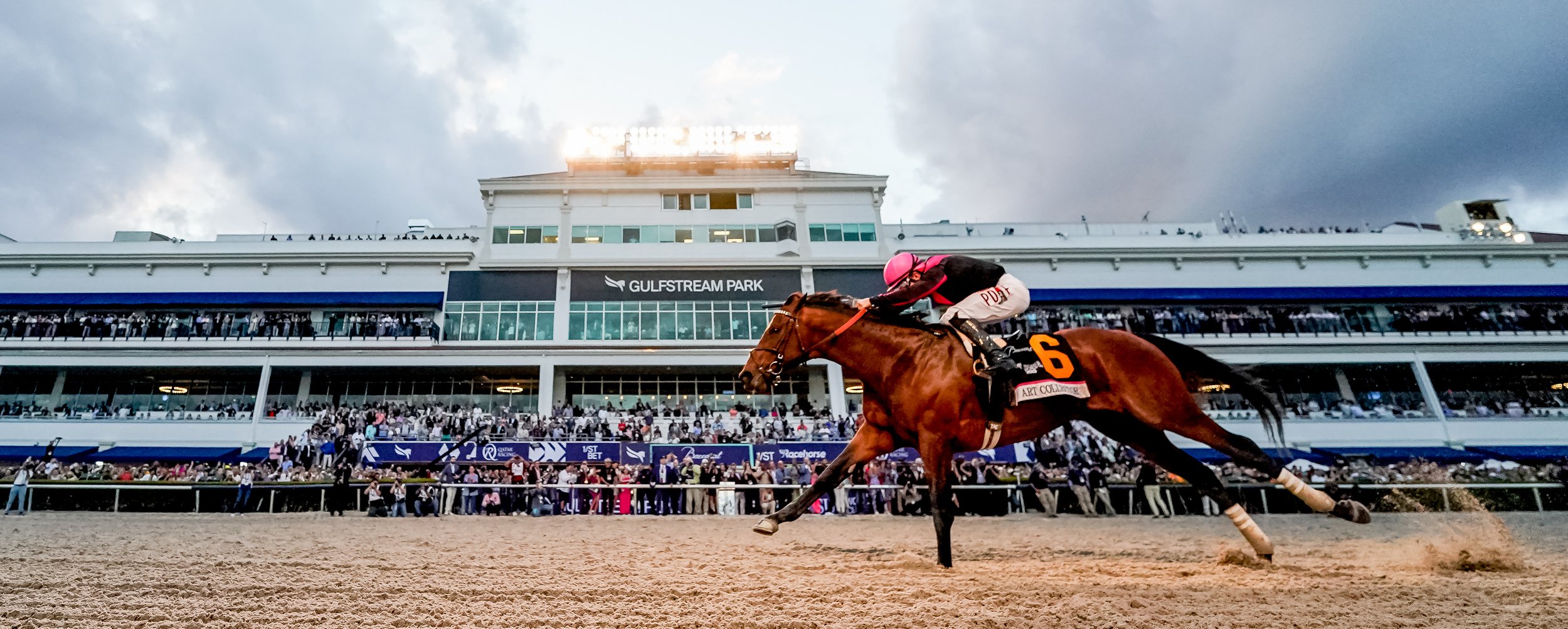







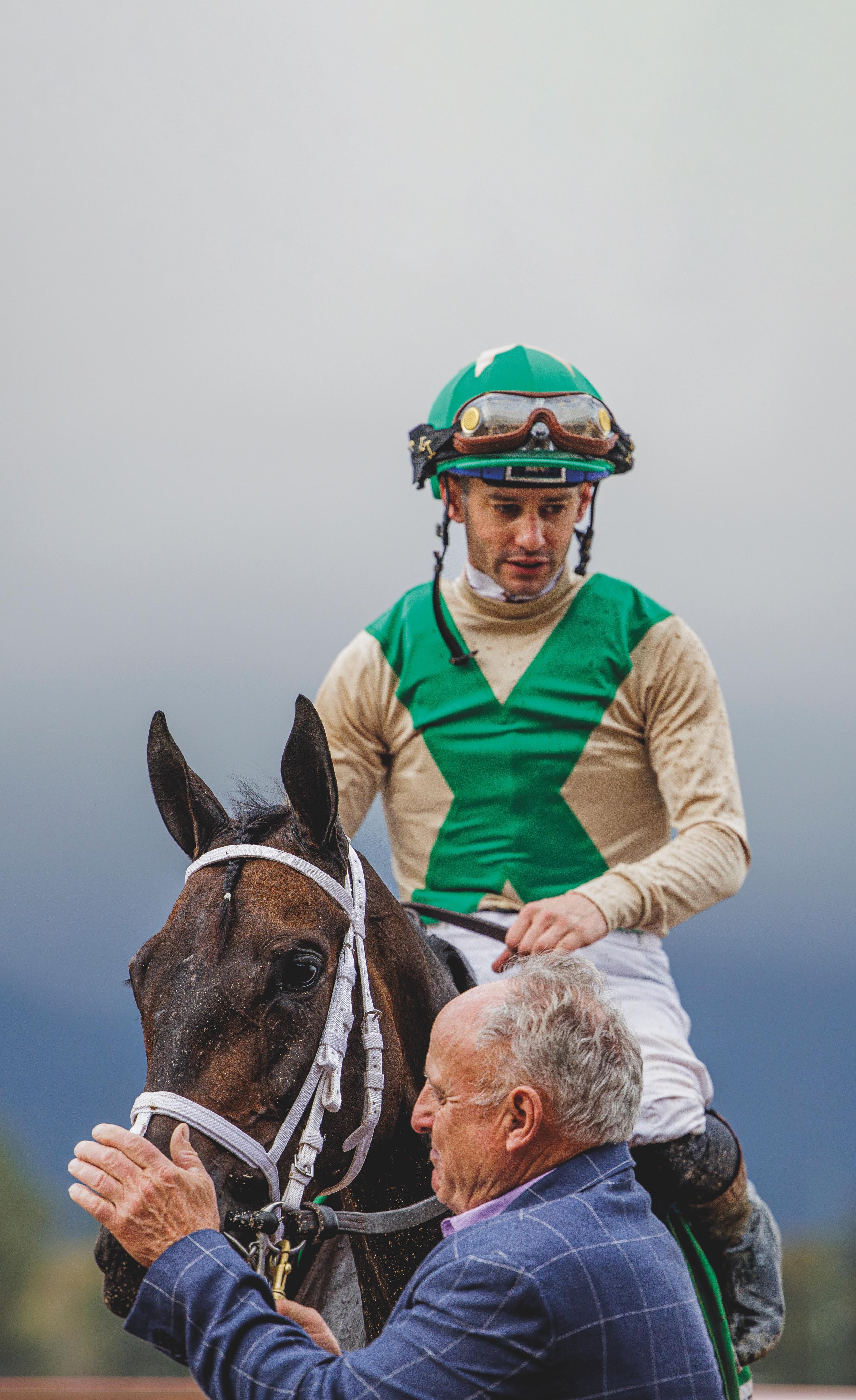



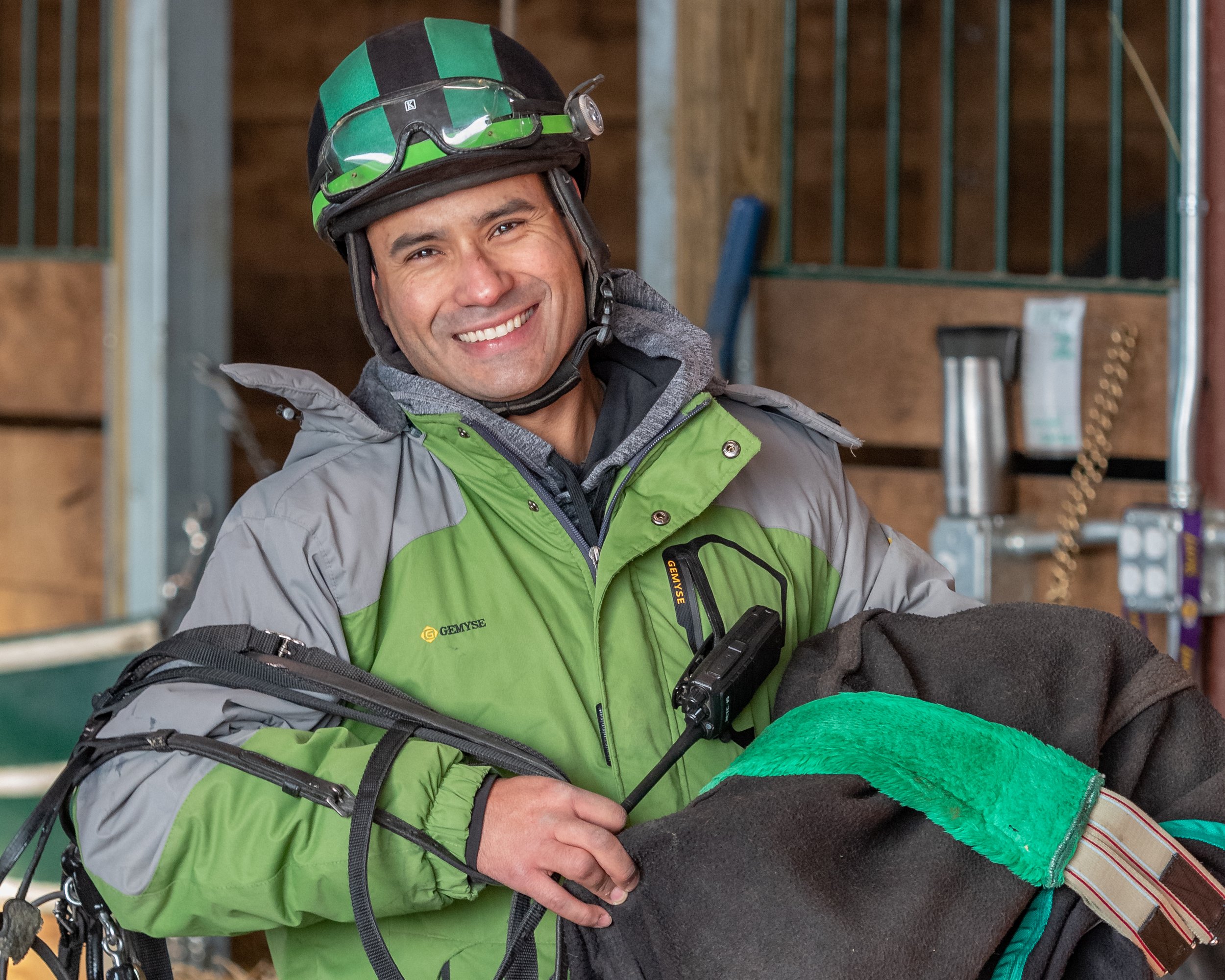

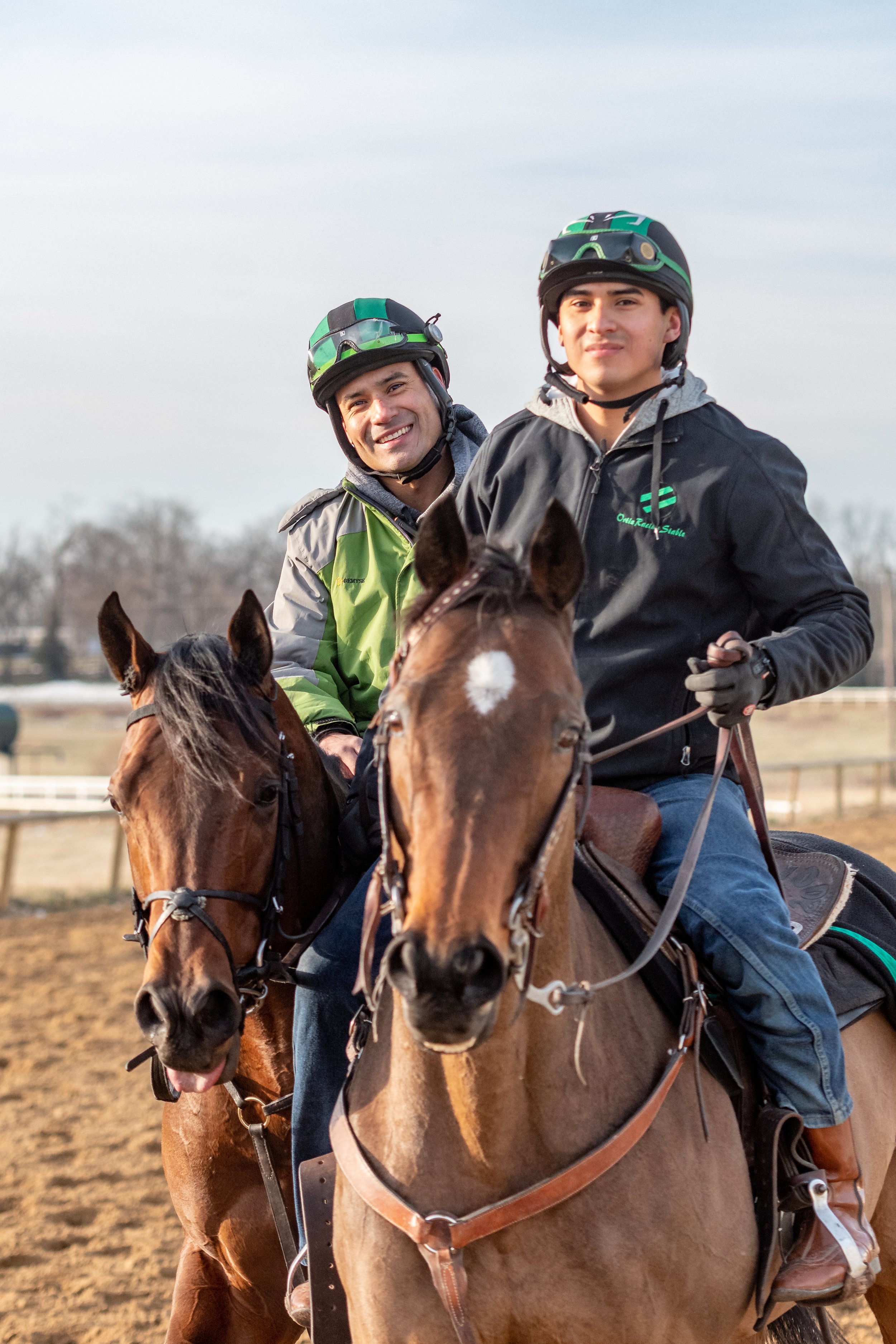
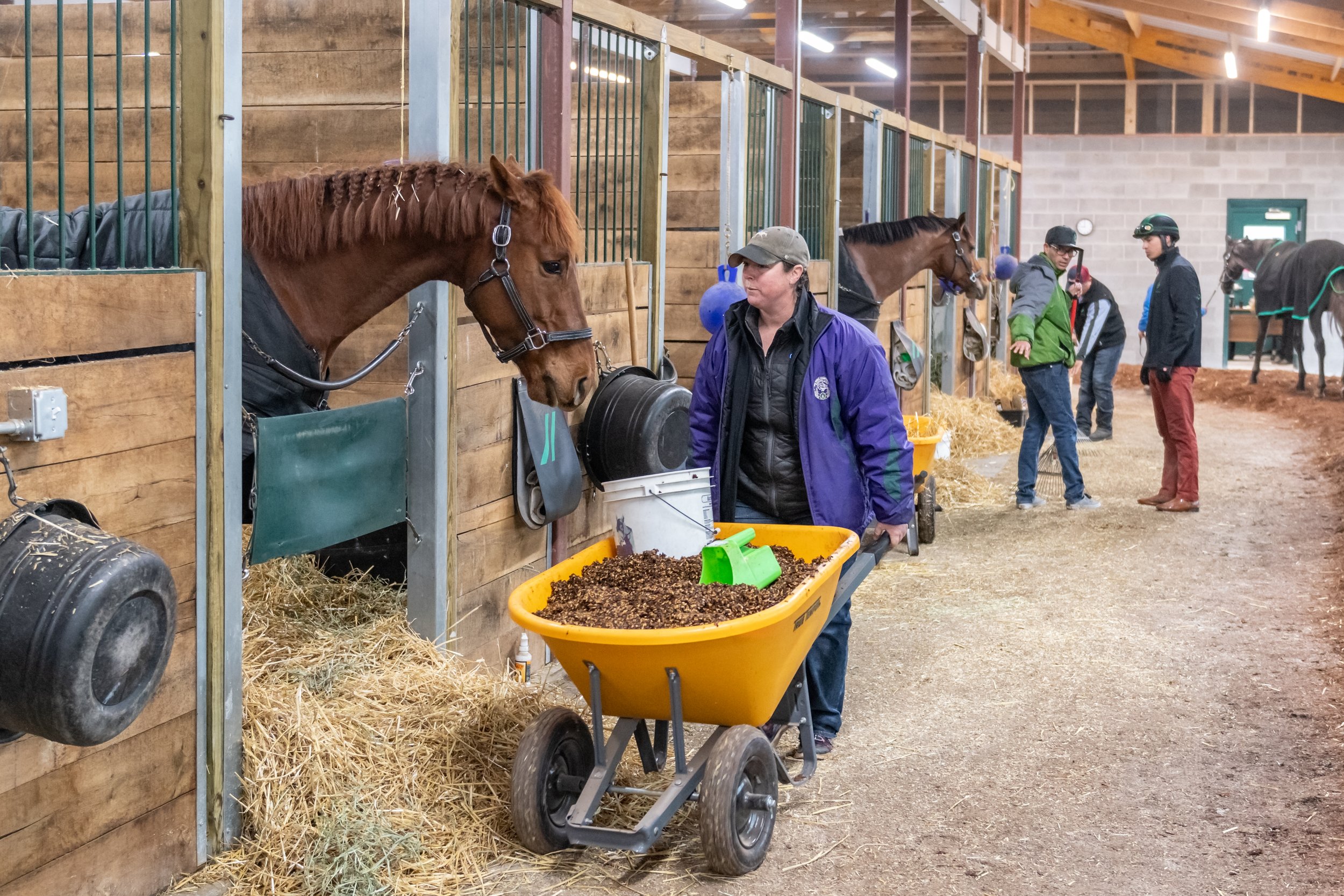

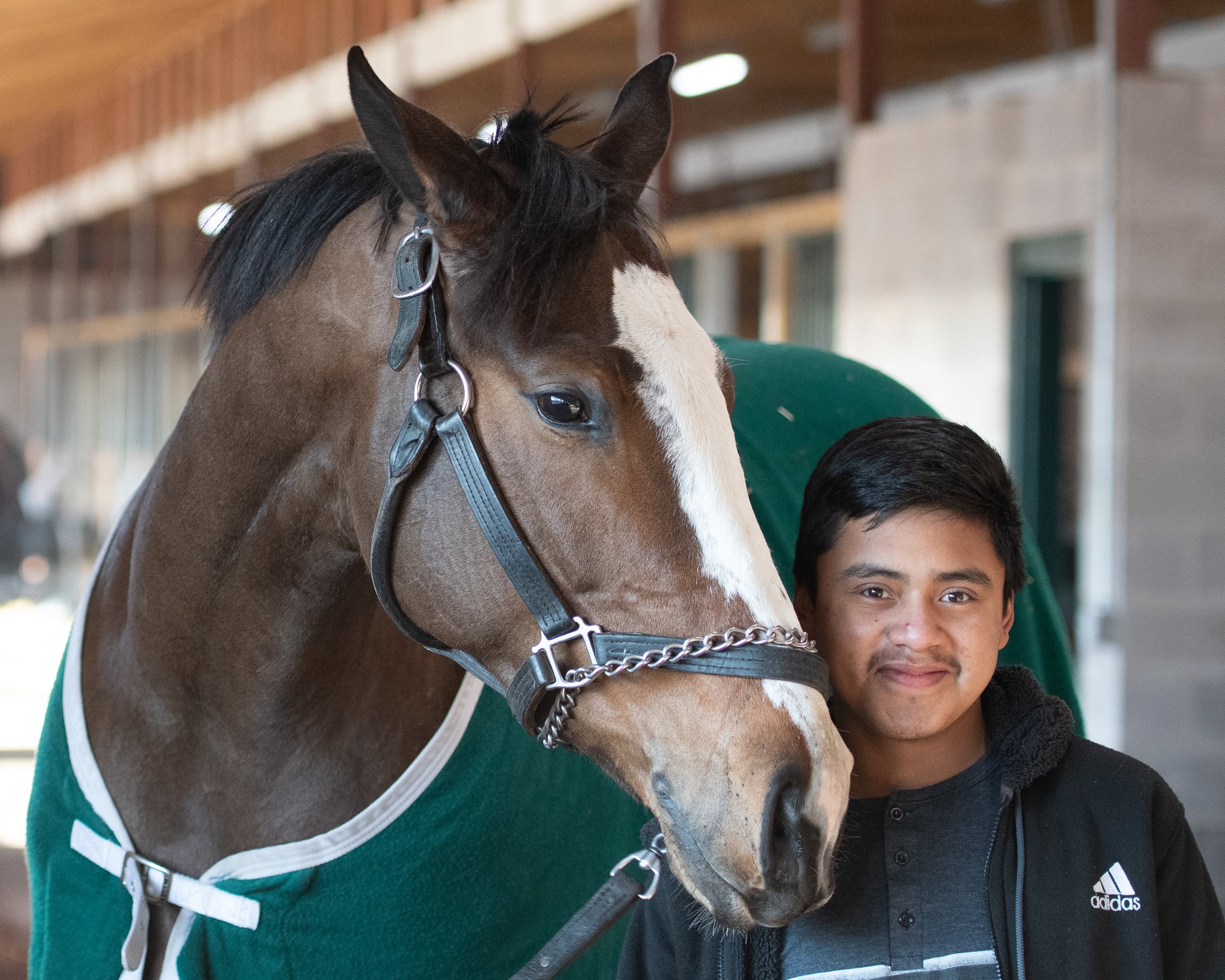
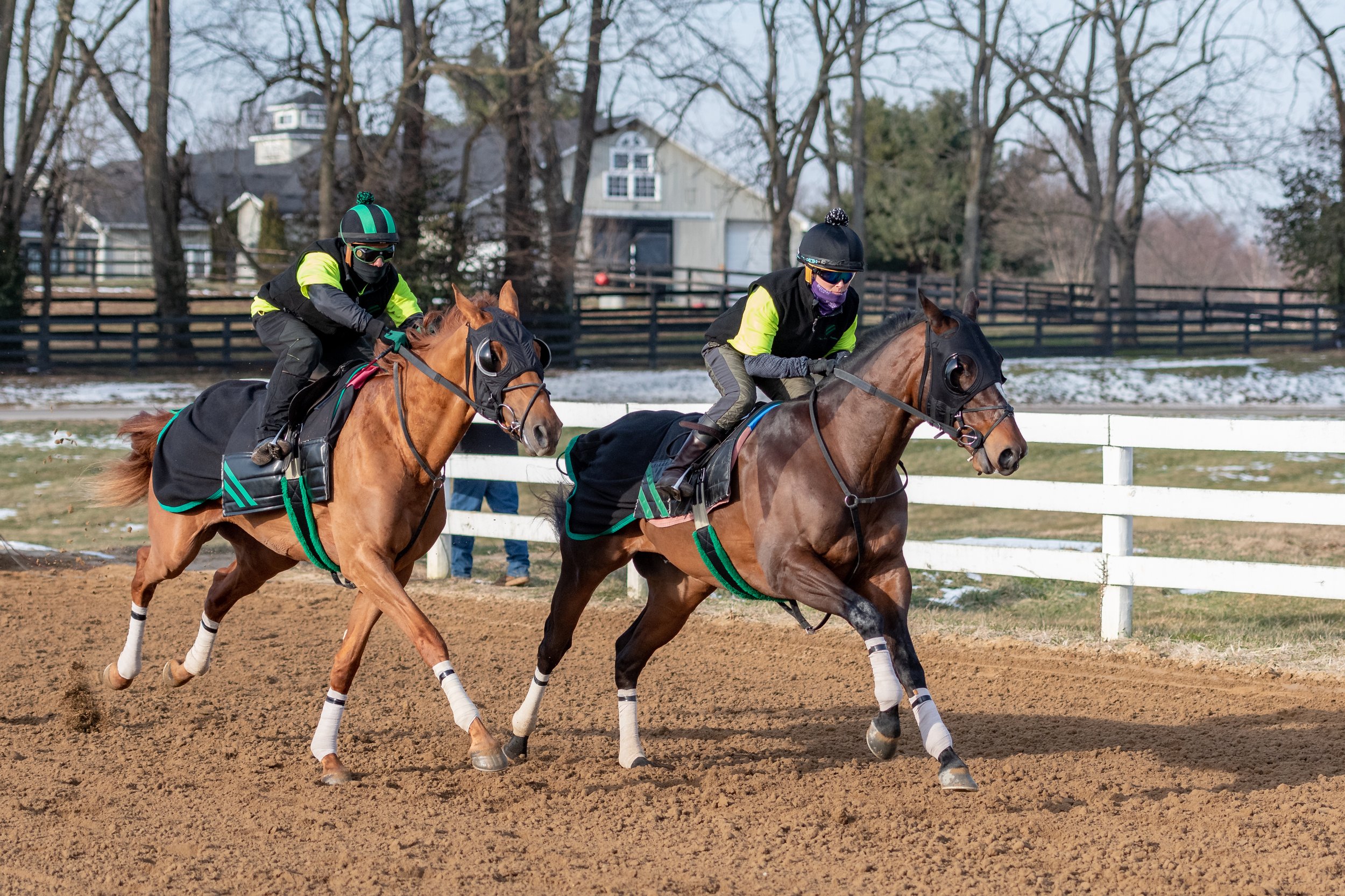







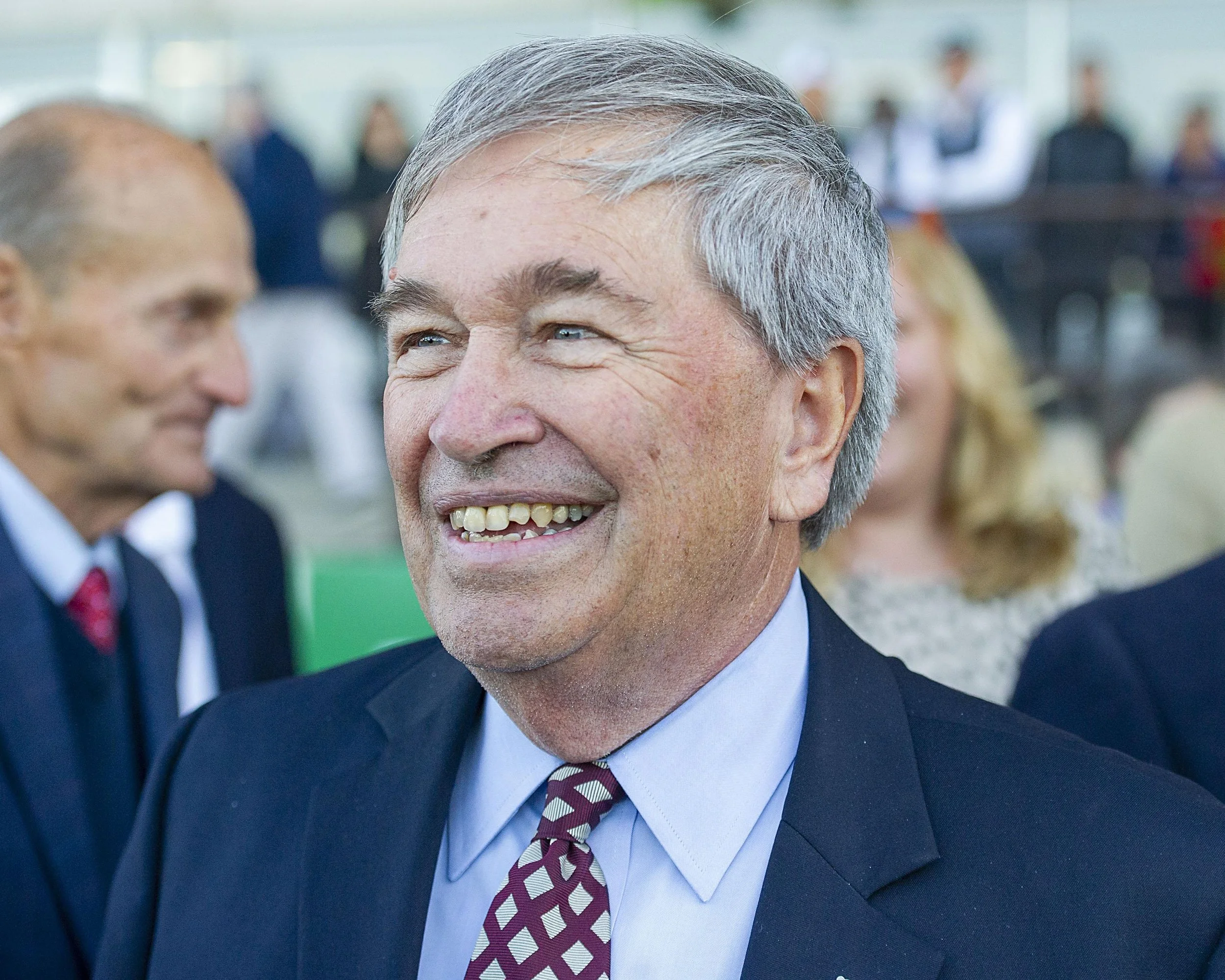
![Is the Casino Band-Aid Falling Off?By Bill HellerThe danger signs are everywhere.Casinos at racetracks were always seen as a band-aid—a temporary fix to horse racing’s massive problem of not doing enough business to survive, let alone prosper.What happens when the band-aid falls off?In Illinois, where horsemen battled for nearly 10 years to finally get casinos approved at its racetracks, Churchill Downs’ decision not to pursue a casino at Arlington Park has left the future of this international-caliber, iconic Chicago racetrack in dire doubt.In Florida, another Churchill Downs’ racetrack—Calder Raceway—which has operated as Gulfstream Park West on a lease agreement with Gulfstream Park, sought and received legislative approval to keep its casino open with jai alai replacing horse racing. This year’s Gulfstream Park West meeting is its last, with horsemen having to remove their horses by April 15. In the interim, horsemen are hopeful that an appeal and two lawsuits will change that reality.The governor in Pennsylvania in February called for revenue from casinos legislatively targeted to racetracks be used instead to offer free college education. And that was before the coronavirus pandemic made every state in America revenue strapped. Pennsylvania horsemen are hoping they’ll be protected under existing legislation.The sky is falling.“Frankly, not everyone is going to survive,” trainer John Servis, a board member of the Pennsylvania Thoroughbred Horsemen Association, said. “We all knew this was going to come. We need to be able to stand on our own two feet. We have to stop relying on the casinos.”Can they?The plight of Illinois horsemen is downright depressing. “The thing that strikes me is that Illinois never had the band-aid of the racino,” said Dave McCaffrey, a long-time harness racing trainer who was president of the Illinois Harness Horsemen for eight years and is now the executive director of the Illinois Thoroughbred Horsemen’s Association. “At least Delaware, New York and Pennsylvania had this nice run of 10 or 15 or 20 years of dramatically increased purses and increased racing dates because of casino revenue.”A native of Iowa who went to college in Minnesota and fell in love with Quad City Downs—a harness track in Illinois—chronicled the decade-long battle to get slots approved at racetracks. It began while McCaffrey was the head of harness horsemen. It began with a typical, historic cooperation between the state’s Thoroughbred and harness horsemen. “The harness and Thoroughbred horsemen, typically in the country, do not agree on much,” McCaffrey said.McCaffrey and Thoroughbred trainer Mike Campbell, who was president of the Illinois Thoroughbred Horsemen Association, had met at the University of Arizona Racing Symposium in 2009. The following year, they decided to work together. “Both breeds were in such dire straits we figured we were stronger together,” McCaffrey said. “What’s good for us is good for you. We hooked up in a great alliance, and in three months we crafted a bill that I think is the best racino deal in the country. It would have produced 15 percent of adjusted gross revenue to purses. In other states, the casino revenue goes from the racetrack to the state to the purses. In Illinois, it would go straight from the track to purses—a huge difference. When other states are strapped, they don’t want to pay that money for purses. In Illinois, they never get their hands on it.”Neither have Illinois horsemen because there are still no racinos at Illinois racetracks a decade later. What went wrong? McCaffrey provided the two-word answer: “Illinois politics.”In various stages, the racino bill was a victim of the city of Chicago wanting its own casino; the governor vetoing the bill; one house passing the bill but the other house declining to do so; a governor who couldn’t get anything through because both houses were of the other party. “They fought like cats and dogs for four years,” McCaffrey said. “The bill didn’t even get to the floor.”Right before the election of a new governor, Jay “J.B.” Pritzker, who supported the gaming bill, in 2018, Churchill Downs, bought a 60 percent interest in the Rivers casino, 13 miles from Arlington. “I remember it being Halloween when that deal was announced,” McCaffrey said. “There was all this optimism that the damn gaming bill might finally be passed in 2019.”Prtizker took office in January 2019. The gaming bill passed both houses and was indeed signed into law on June 27, 2019, authorizing Illinois’ three remaining racetracks: Arlington Park, Fairmount Park and Hawthorne to build racinos. But Churchill Downs didn’t even apply for a racino license. “Churchill Downs decided this gaming bill doesn’t work for them and were not going to apply for the racino license at Arlington despite the fact that they were screaming for the bill to get passed for 10 years,” McCaffrey said.It got worse. The coronavirus pandemic struck this spring, and Arlington’s already reduced meeting of 70 days were slashed to 30 minus Arlington’s signature races including the Arlington Million.On July 31, according to a story in Chicago’s Daily Herald, Churchill Downs Inc. CEO Bill Carstanjen, on a quarterly earnings call with investors, said, “The long-term solution is not Arlington Park. That land will have a higher and better purpose for something else at some point. But we want to work constructively with all of the constituencies in the market to see if there’s an opportunity to move the license or otherwise change the circumstances so that racing can continue to Illinois. For us, we’ve been patient and thoughtful and constructive with the parties up in that jurisdiction, but long term, that land gets sold.”Mike Campbell is buying none of that. “I’ve repeatedly said I’ve had conversations with several gaming companies to buy Arlington Park—three gaming companies and a very wealthy horse owner all made inquiries to Churchill Downs. Churchill Downs said, `Not interested.’ They’re just not interested. Carstanjen said, `a higher use than a racetrack. Who the hell is he to say it’s suited for a better purpose? There are thousands of jobs involved. I think that what’s going to happen at Arlington is that in the middle of the night they’re going to come in and excavate that track in a manner that it can’t be fixed. Just do it and don’t ask questions.”“It’s exasperating,” Campbell said. “I’ve been president of the horsemen for 10 years. I’m all in for my horsemen. I told my board I’ll do everything I can to step in front of the train to slow it down. But money always wins. I’m the first to recognize it.”Phone calls to Churchill Downs, Inc. requesting a comment were not returned.Campbell, who trains a dozen horses, spent the past year on the road. “We traveled a lot,” he said. “I was in Tampa for seven months, then at Colonial. I plan on going to Keeneland, then back to Florida. I don’t want to do that. We’re being driven from our homes. This is very personal to me. I’ve lived 12 miles north of Arlington Park for 25 years. I raised my family there. My two sons are jockeys. They’re driving us from our own homes. We’re going to move. We’re going to sell our house. There are dozens like me. They’re not taking a gaming license? It’s absurd people are letting them get away with it.”According to McCaffrey, Hawthorne will begin building its racino in September. “It will take 12 to 14 months,” he said.Arlington Park could be shuttered by then.In Florida, Calder Raceway, a.k.a. Gulfstream Park West, will become history. “Our lease was up at the end of the year anyway,” said Billy Badgett, Gulfstream Park’s executive director and former trainer of Filly Champion Go for Wand. “They had everything put in motion to get jai alai approved. I don’t know how it got approved.”He certainly understands Churchill Downs’ motivation: “They can run jai alai at a very minimal cost. They don’t have to have horse racing or dog racing. Eventually, everybody is going to do that or try to do that. This is the edge everyone wants to take.”The impact on South Florida horsemen is real. “We’re going to lose 430 stalls,” Badgett said. “We’re building more barns in Palm Meadows (Gulfstream Park’s training center, 20 miles north) so they’ll have a place to go. They let us extend an agreement to keep the barns open until April 15.”Badgett said Gulfstream Park will also “lose some substantial purse money,” but is working to mitigate that loss. “We’re working on some legislative action, including night racing.”Badgett is convinced that racing must address its own future. “I’m a firm believer that racing should be able to stand on its own two feet,” he said. “If you have to rely on your casinos for purse money, it’s not good.”He is not losing faith in horse racing’s appeal. “We’ve been lucky that people still love horse racing,” he said. “As you can see during the pandemic, the handle numbers have been huge. Even on Travers Day at Saratoga, they were up 38 percent (???) with no people there.”In the meantime, the Florida Horsemen’s Benevolent and Protective Association (FLHBPA) has two lawsuits pending before an appellate court arguing that Churchill Downs built a jai alai fronton with no connection to its casino as the statute of Florida law stipulates. “Churchill Downs was allowed to tear down the grandstand at Calder and [was] told if they apply for a summer jai alai permit, they would no longer have to put horse racing on to maintain their casino license,” Kevin Scheen, the executive director of the FLHBPA said. “This is how they side-stepped their obligations to the horsemen and the horse industry. Their only consideration is to their shareholders—the bottom line. We’re losing 40 days of racing. We’re hopeful we’ll prevail on the appeal. If we don’t, we’ll be examining our options.”He mentioned Palm Meadows and Ocala as possibilities. “We’re lucky we have a great relationship with Gulfstream Park.”In Pennsylvania, Servis—who did a masterful job with 2004 Kentucky Downs and Preakness Stakes winner Smarty Jones—and Sal DeBunda (president of the Pennsylvania Thoroughbred Horsemen’s Association since 2010) continue to battle for horsemen’s future. “We’ve been battling every year,” Servis said. “Every year they want to take money from us. The governor can say take the money for education or highways or senior citizens, for whatever. Does the money ever get there? Politics is politics.”He continued, “There’s a bill where they want to put slot machines in the bars and restaurants. It may not be this year. It may be next year. But it’s coming. If that happens, we’re going to have to fight to get a piece of that. That’s only the tip of the iceberg. We have to be aggressive. We have to take care of ourselves.”DeBunda believes they already have through Article 71, which gives a percentage of slots to the Pennsylvania Horse Development Fund. “They’ve been taking money out of the Fund since year two after slots were passed 11 years ago,” he said. “If they take more than $31 million, they have to return all the money they’ve taken the last 10 years. That was a way to not let them take more. The governor was told this by his staff before his statement about education. If we were going to allow slots in the same facility where we have horse racing, we were going to take a piece. That’s been forgotten. They put in table games and on-line gaming, and we get none of that. When he first got slots, we looked at each other and said this is terrific. We didn’t realize every year we have to educate people. The biggest factor is educating our legislature.”With slots, DeBunda said, average daily purses at Pennsylvania tracks have increased from $130,000 to $250,000. Without them? “I’m an optimist,” Servis said. “I don’t want to paint a negative picture, but we’re battling every single year.”Will New Jersey and Kentucky tracks have to battle, too?In late August, the governor of New Jersey submitted a proposed state budget which did not include the $20 million subsidy that has been split evenly between the Thoroughbred and Standardbred industry.Meanwhile, a court ruling in Kentucky on September 24, has endangered the wildly-popular Historical Horse Racing (HHR) slot-like machine game, a completely different version of the Instant Racing game which literally saved Oaklawn Park in Arkansas, and allowed Kentucky tracks to boost their purses dramatically. On September 24, a Kentucky Supreme Court reversed a 2018 court decision allowing the game at Kentucky tracks. The ruling said that one part of the game using exactas violated the state law on legal parimutuel wagering. That decision could be devastating. In the 2019-2020 fiscal year, which ended in June, $2.2 billion was wagered on HHR at Kentucky tracks, generating $15.6 million for the Thoroughbred Development Fund, $11.8 million for the Standardbred Development Farm, $650,000 for the Equine Industry Program and $320,000 to Equine Drug Research.Churchill Downs Inc., which saw its share price drop by 9.74 percent on the day of the court ruling, released a statement that Churchill Downs tracks does not use the exacta in any of its HHR facilities.Kentucky Governor Andy Beshear said that HHR contributes $21 million to the state budget and that his office is working to find “a path forward.”Sooner than later, many racetracks are going to need a path forward, one dependent on its quality of racing and the marketing of its races rather than slot machines.*************************Oaklawn SidebarBy Bill HellerCenturies after Plato said, “Necessity is the mother of invention,” Eric Jackson, the senior vice president at Oaklawn Park in his 40th year at the Cella family’s beautiful track in Hot Springs, Ark., was desperate. “We had been imperiled in the 1990s,” he said. “We had casinos popping up outside us in Mississippi, Missouri, Oklahoma and Louisiana. We had lost 50 to 60 percent of our business. We nearly went out of business. We knew we had to have an electronic product.“In Arkansas, we were allowed parimutuel betting. I had an idea to develop a slot-like wagering device based on horse racing. It took a while to germinate—three or four years.”That idea (Instant Racing) not only saved Oaklawn, it ultimately led to the state of Arkansas approving four casinos—one of them at the track the Cella family has owned for 117 years. Oaklawn is predicting purses for its next 57-day meet will top $700,000 daily.With the addition of the casino, Oaklawn Park dropped Instant Racing in November 2018, and it has done nothing to slow Oaklawn’s continuing purse growth, one which will accelerate when Southland Casino Racing in West Memphis abandons greyhound racing by December 31, 2022. That decision has already been made and announced. Southland Casino received 40 percent of targeted casino revenue for purses and Oaklawn 60. “When they close, we’ll get 100 percent,” Jackson said.“We believe we have the best racing gaming model in America, and the model is based on a single concept,” he continued. “And the concept is ‘racing comes first.’ We have been a track for 117 years. The Cella family loves racing.The irony is epic. A slot-like machine based on horse racing allowed Oaklawn Park to prosper, then was abandoned when the track added a full casino. But that wouldn’t have happened had Oaklawn not used Instant Racing to literally continue to operate. “It exceeded our expectations,” Jackson said.His boss, Louis Cella said, “We buck the trend. You don’t see feel-good stories today. I think the answer is we focus on Oaklawn. We don’t have a higher agenda. We believe in it, and we’re going to lead by example. We have an unbelievable relationship with our horsemen and with the state racing commission. It’s the opposite of typical. Other companies focus on the bottom line. We don’t. We don’t have shareholders. A lot of our success is because we don’t have shareholders. We want you to have fun. We couldn’t care less if you make a wager. That’s not our focus. We prefer people come with a family, go in the infield with hot dogs, and enjoy the sport. We’re lucky. We don’t have professional sports in Arkansas. We are in the game to sell the sport. If you can’t, shut the doors.”His track nearly did.Oaklawn invited several technology experts to visit Oaklawn Park and meet with racetrack officials and officials from Amtote in 1998. Eventually, they devised Instant Racing, which allows betters to do a bit of handicapping, satisfying Arkansas’ state law description of parimutuel racing.Instant Racing was introduced in January, 2000, and then expanded in 2009. Purses grew exponentially. “In 2018, there was an effort from the Quapaw Native Indian tribe. They came up with a novel idea,” Jackson said. “They would get one of four casinos in Arkansas, and they were willing to put casino revenue into purses. The voters approved it.”Oaklawn Park has flourished ever since. “First off, we’re really lucky,” said Cella, a lawyer and real estate dealer in St. Louis who took over the track’s operation three years ago after his dad died. “We don’t have professional sports in Arkansas. We’re really hard to get to. Once you get there it’s very hard to leave it. It’s the natural beauty surrounding us. We’re part of a park (Hot Springs National Park). It’s beautiful. Because of that, we have a very close relationship with our community. Hot Springs’ population is around 35,000 to 40,000. We’ll have 70,000 people on Arkansas Derby Day. We don’t have professional sports in Arkansas. People sneak in and go and have fun.”Of course, Oaklawn has a decided edge. Just like Saratoga, Oaklawn has a limited single meet every year. People miss racing. “Our nickname was Saratoga South,” Cella said. “That was our mantra. Follow them.”Oaklawn Park has done that with decisive, innovative ideas. “We took over our catering 25 years ago because we had to keep prices reasonable,” Cella said. “When you have an outside company, they have to make a profit. When we had our 100th anniversary celebration on opening day in 2004, we said, `What happens if we roll back prices to what they were 100 years ago?’’ We had 10-cent sodas and 50-cent corned beef sandwiches. We basically give away six tons of corned beef. We do that every year on opening day. That’s how we kick off the season. You see folks with sandwiches piled high. Businesses send people running in to get a stack of sandwiches. Because we don’t have shareholders, we get to choose. What’s best for our industry? We ask ourselves every single day, `How do we improve our sport in Arkansas?’”Jackson and Cella came up with an original idea. “When we started to grow, we had to hire gaming folks from outside Hot Springs or outside Arkansas,” Cella said. “We said most of our managers have no idea what horse racing is. Eric created an agenda for Oaklawn University. Eric does everything for it. The purpose is to give these new members a smidgen of information about horse racing, our family and our community. It ends with a tour of a horse farm. It has nothing to do with casinos. It’s about horse racing and our history. That’s the message.”Cella enrolled himself. “That’s the coolest thing I’ve ever been through.” He said. “I had no idea. I loved it. It’s a great program.”The six-week curriculum, Jackson said, “explains how we got here, why certain things are important to us. When you connect all the dots, it says racing comes first. We want people to never forget that.”Jockey Ron Moquet and Jeanette Milligan—office manager of the Arkansas Horsemen Benevolent and Protective Association, whose husband Alan is a trainer—are Oaklawn University graduates.Oaklawn’s successful business model with Instant Racing led to tracks all over the country to invite him to speak. One discussion, maybe 15 years ago, sticks in his memory. “I was at Derby Lane Dog Track in Tampa, Fla.,” he said. “I was with representatives of the dog industry and horse racing. They wanted to know about Instant Racing. I told them if one party gets greedy, it’s not going to work. You have to agree to have lower margins because the people will show up. People started yelling at each other, dogs vs. horses. I banged my glass and stood up. I said, `Gentlemen, you’re wasting my time.’ And I walked out.”](https://images.squarespace-cdn.com/content/v1/517636f8e4b0cb4f8c8697ba/1603704568534-DM1VCL3TR93JB62ZUL68/HYR46T%2B%25281%2529.jpg)











